Cyber 7 (1989) #1-7, Cyber 7: Book Two (1989) #1-10 by Shuho Itahashi et al.
This is the second Japanese comics series Studio Proteus packaged for Eclipse, and it probably the weirdest one Eclipse published, in some ways.
I can see why they picked it, perhaps: It’s very influenced by modern European comics. The face above on the left could come from any number of French adventure serials for teens.
But that’s not a very European action sequence… or American… or Japanese, even. It’s weird, and I find it difficult to articulate what makes it so odd.
Once we get to the monsters we’re on more familiar turf. Not that they’re anything like Hitoshi Iwaaki’s Parasyte creatures, but these guys made from pages of paper are weird and unnerving in the same way.
Anyway, Itahashi starts off the series with a ferocious opening 40 pages where nothing is explained and everything is mysterious and intriguing. These are propulsive, gripping, original sequences that really feel exciting and fresh.
And then Itahashi starts in with the explicit explanations that pretty much drain the story of its tension and intrigue.
The villains even get in on the act with several scenes of as-you-know-Bob-ing where they explain things to each other that they both know in advance. There are many, many pages of this stuff, and it’s tedious as fuck. I’d have preferred to be left in the dark if this is the alternative.
On the other hand, there are some really kick-ass creatures here, so that helps a lot.
Is it just me, or are these labs kinda Metal Hurlant ca. 1979 or what?
The titular Cyber 7 are a gang of… robots… that are the heroes here, but only reluctantly. They only help if the princess asks them to using a text from a lost book. It’s so weird. Reluctant djinns?
Some of them are nicer and gets ragged on by the more reluctant ones.
The wonderful cityscapes look more like normal Japanese comics books, so I’m assuming that Itahashi has a gaggle of assistants that do these pages for him. They’re drawn in a very different style than the figures.
Another weird thing about this series is that Toren Smith, the Proteus packaging guy, didn’t write an introduction in the first issue or try to introduce Itahashi to the audience. Virtually all the other Eclipse Japanese translations have done so, and it makes sense to contextualise the work.
But in the final issue of the first volume, we get a brief interview with the artist and learn that, indeed, he has an entire rented house full of assistants, and that he never really intended to start doing comics, and that he’s a fan of Enki Bilal. All of which explains a lot about what I’ve just read.
Heh. cat ⊕ yronwode explains what Eclipse means with “limited editions”: It’s whatever the comics shops ordered plus 10%. I guess that’s… limited… even if that’s basically how virtually all comics in the direct market are produced. The “limited edition” thing basically just means that they kinda promise not do reprint the thing, not that it’s scarce…
Anyway! The second volume picks up right where the first one ended, and introduces us to a slew of new, fun and interesting characters. Here we have one of the villains who’s walking to her… throne… and then stumbles over a carpet, and then shoots the carpet because she’s so mad!
That’s quality villainousity! Five stars!
It’s hard to say how serious Itahashi takes his comics. This series has a well worked-out plot and setting: You can feel there’s a lot of thought behind it. But it’s like he can’t resist putting in all these less than serious sequences in the middle of the “real” action.
I really like it, and it’s a fun, breezy read.
Eclipse puts in these random ads in the here and there in the comic which I take to mean that they messed up the left/right page sequence and had to put something in to make double page spreads work properly again.
The Giant Finger of Squeeze!
The tenth and final issue of the second volume is a choppy read, and it ends on the inside back cover. I wonder whether they dropped some pages to fit it all in, because they had to cancel the book in a hurry…
Due to low sales? I can only guess, but Itahashi is, basically, the only translated Japanese comics maker to not have his own English-language Wikipedia page, and he doesn’t seem to be on any of the Manga wikis either.
The series was never picked up by anybody else after cancellation, and it’s never been reprinted, and I can’t find anybody writing anything about it except in the book Manga: The Complete Guide:
The detailed, faintly Western artwork has the chiseled 1980s look of Katsumi Otomo or Jiro Taniguchi, while the surreal villains are reminiscent of a Grant Morrison or Peter Milligan comic.
All of this leads me to think that this was never very popular comic in the US (or most anywhere), and it’s not that difficult to guess why: It doesn’t really tick many of the boxes that attract audiences to Japanese comics. It’s both too weird and too familiar at the same time: It’s not Japanese enough to satisfy the genre cravings.
I really enjoyed reading it and think it’s better than most of the Japanese books Eclipse published, but not having any kind of satisfying resolution at the end of the second volume is a bummer.
Itahashi said in the interview that he planned seven volumes, but I don’t know how many were completed.

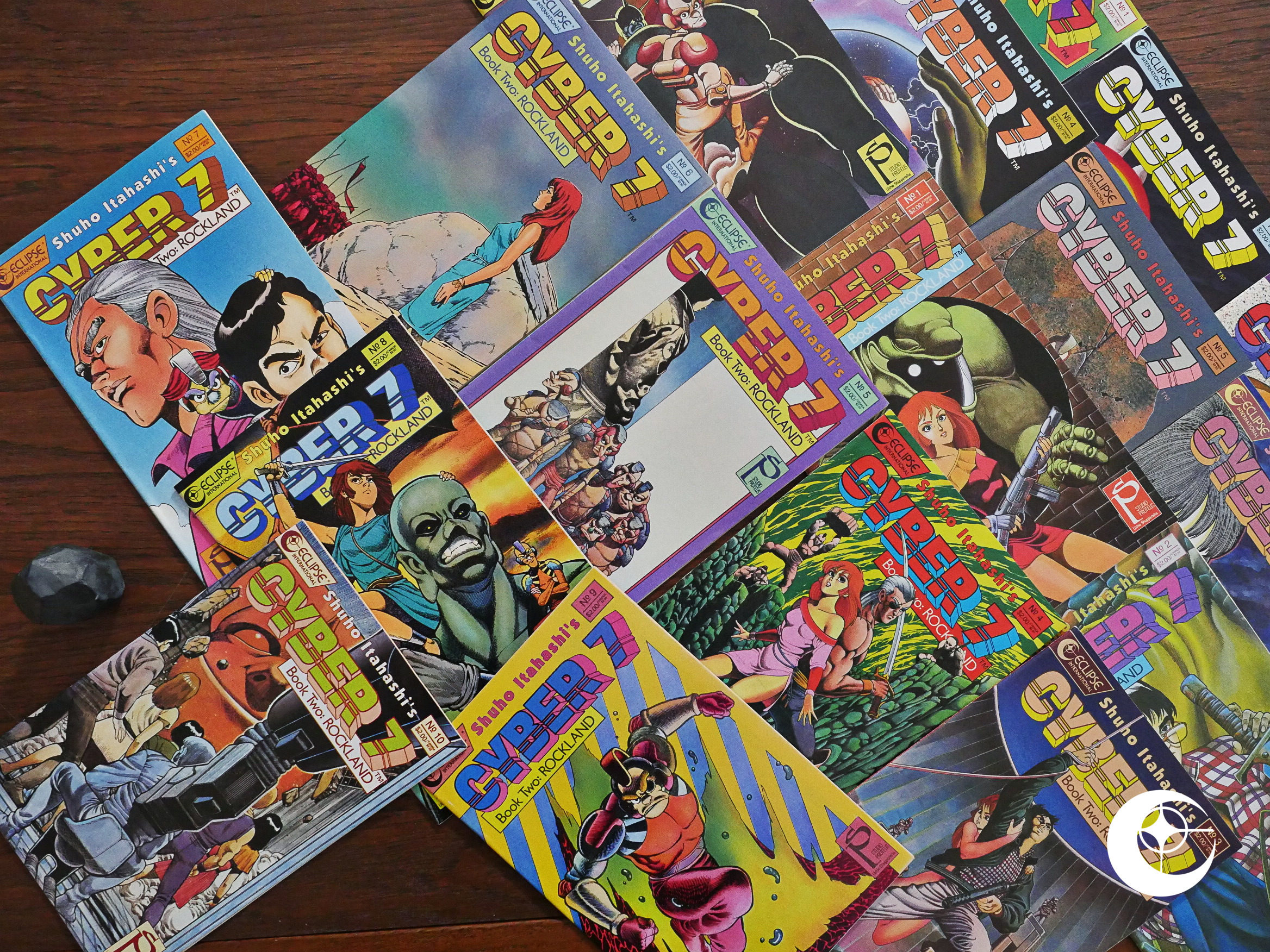
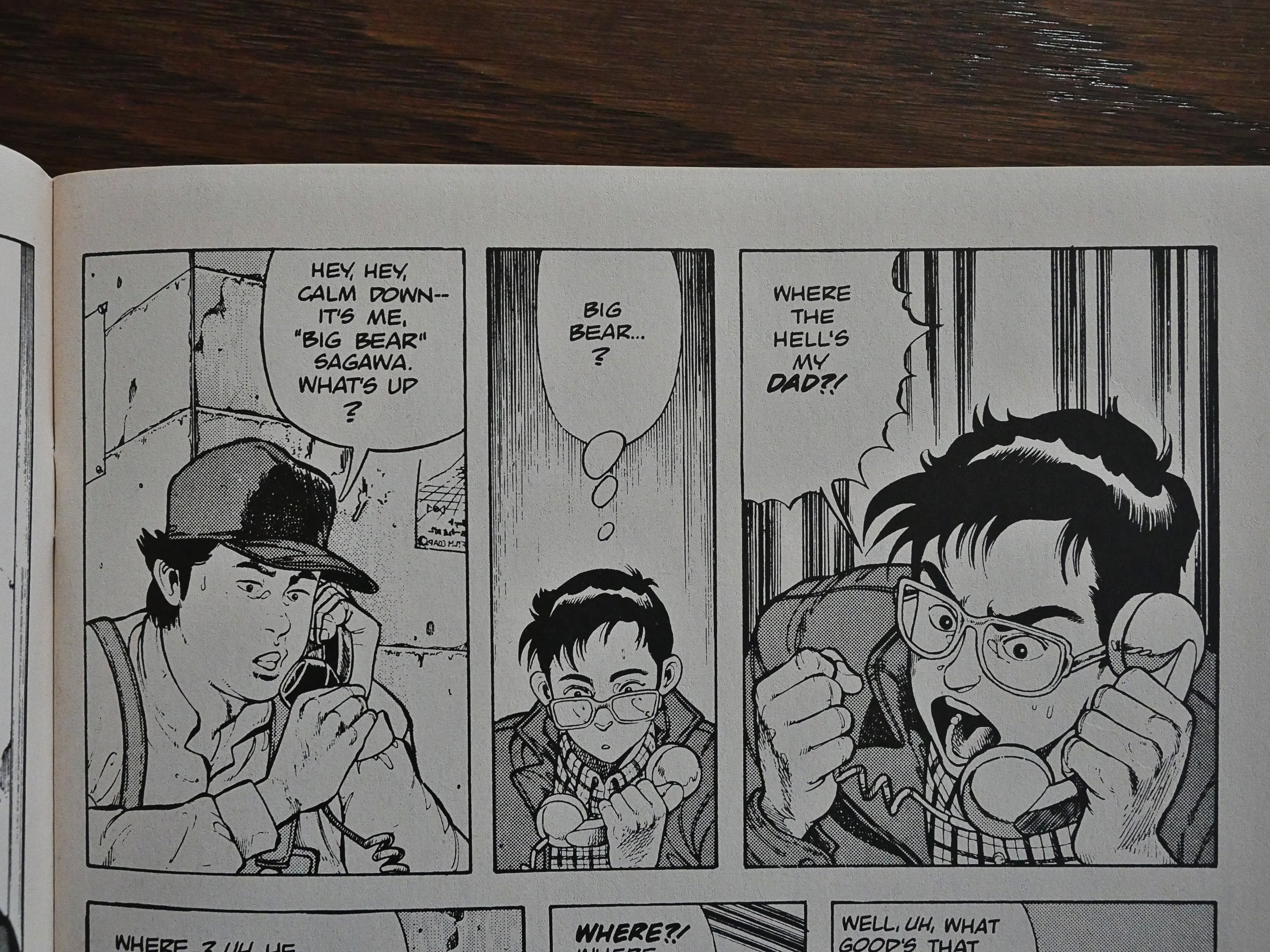
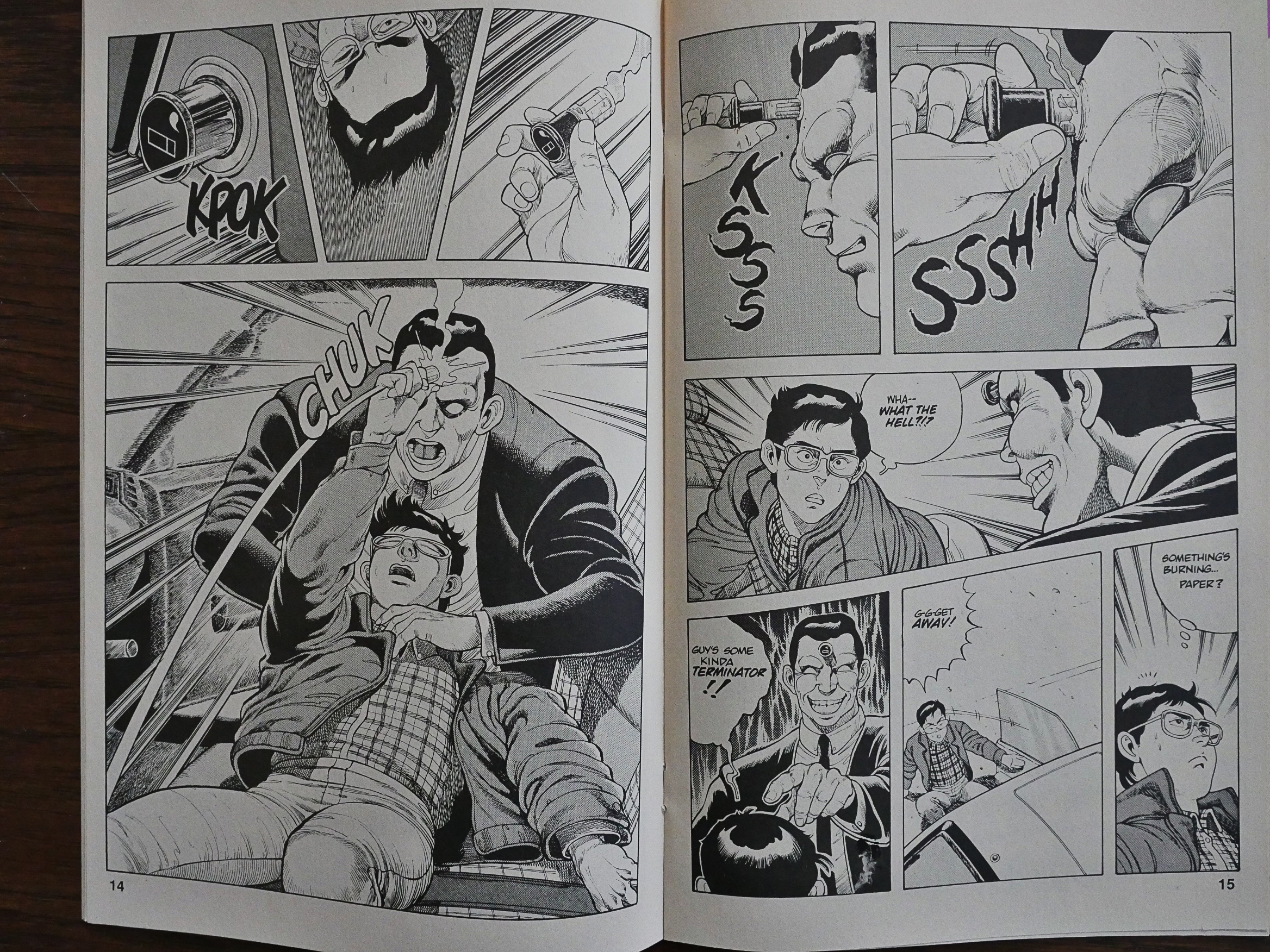
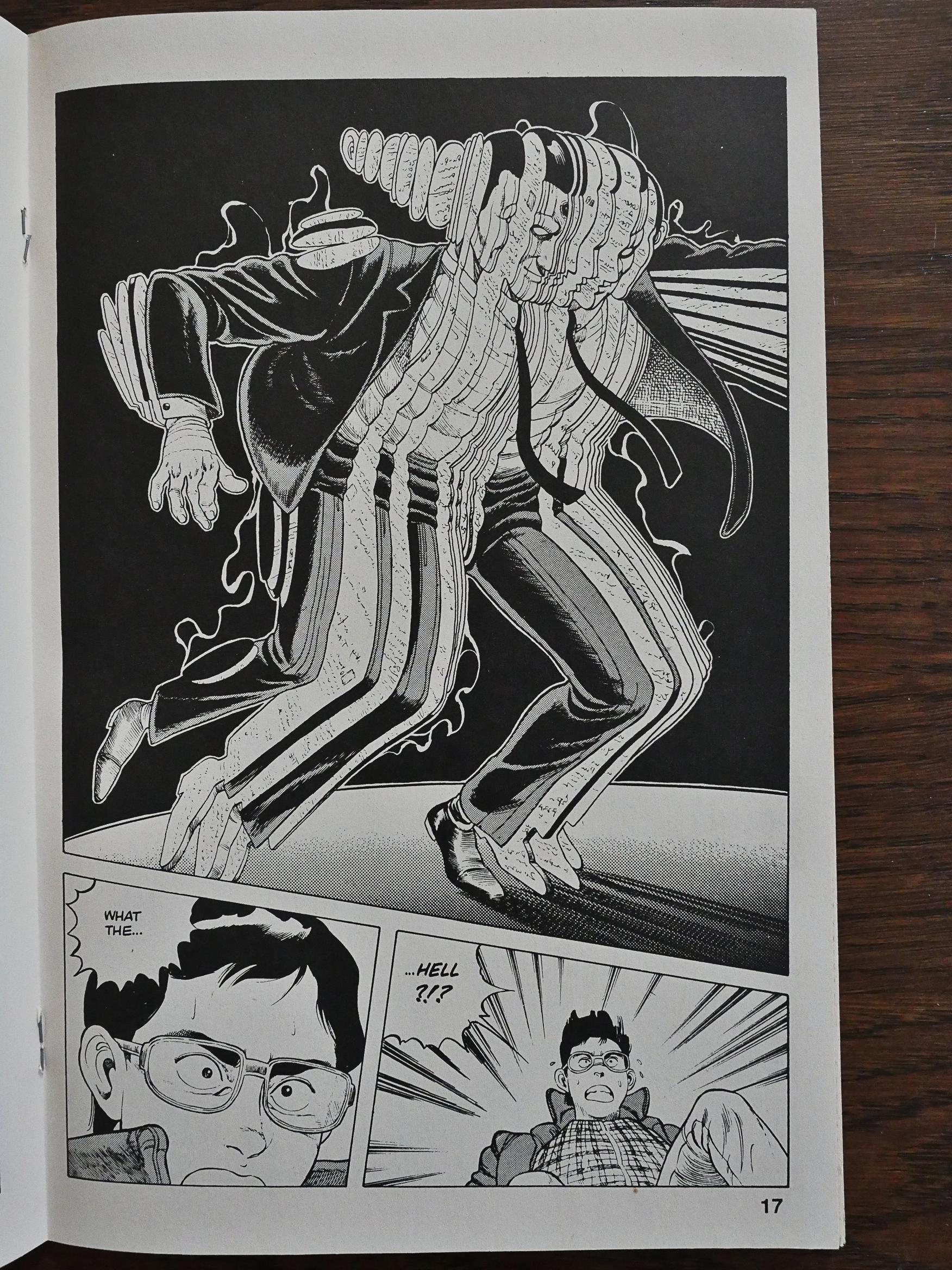
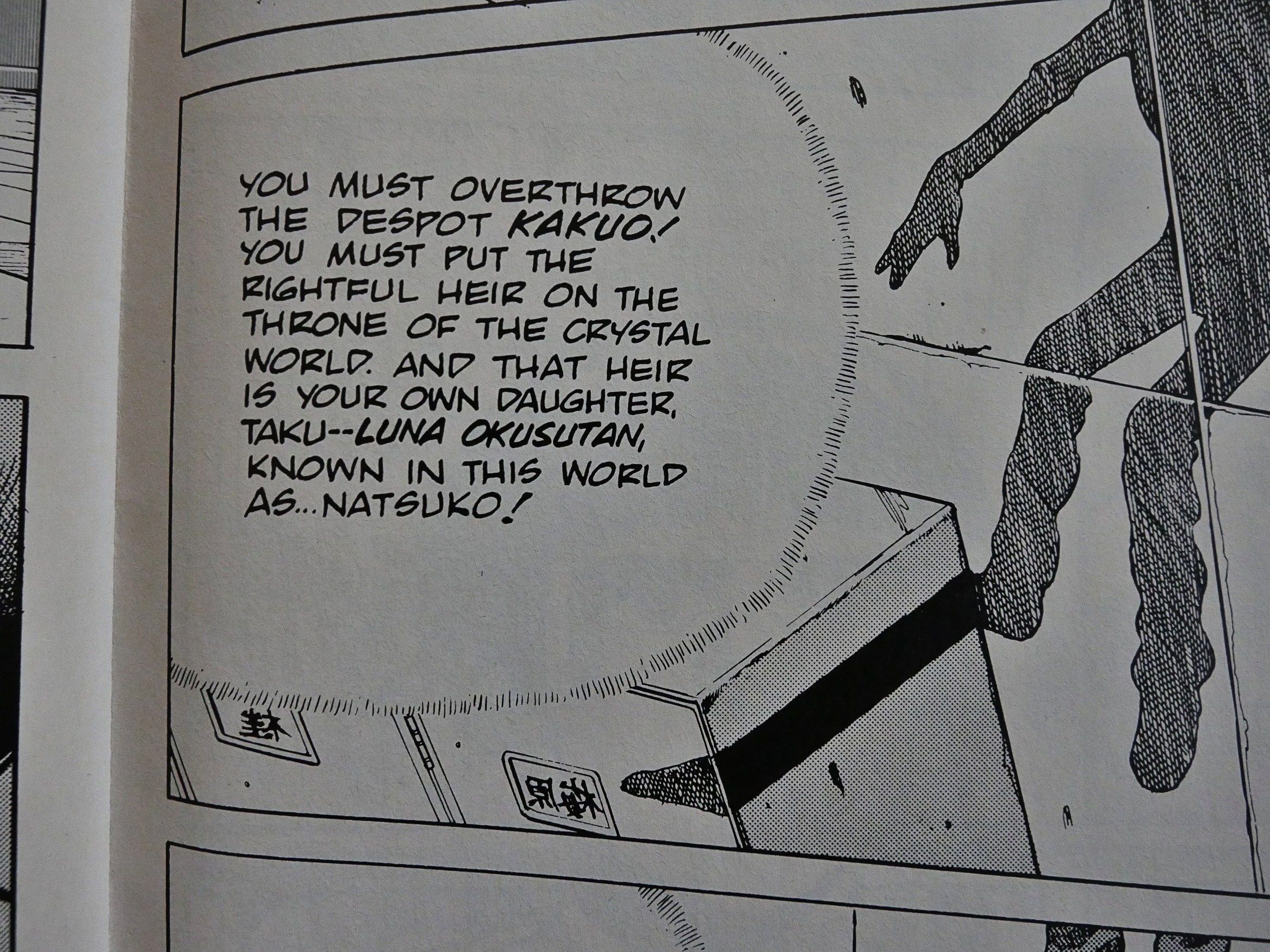
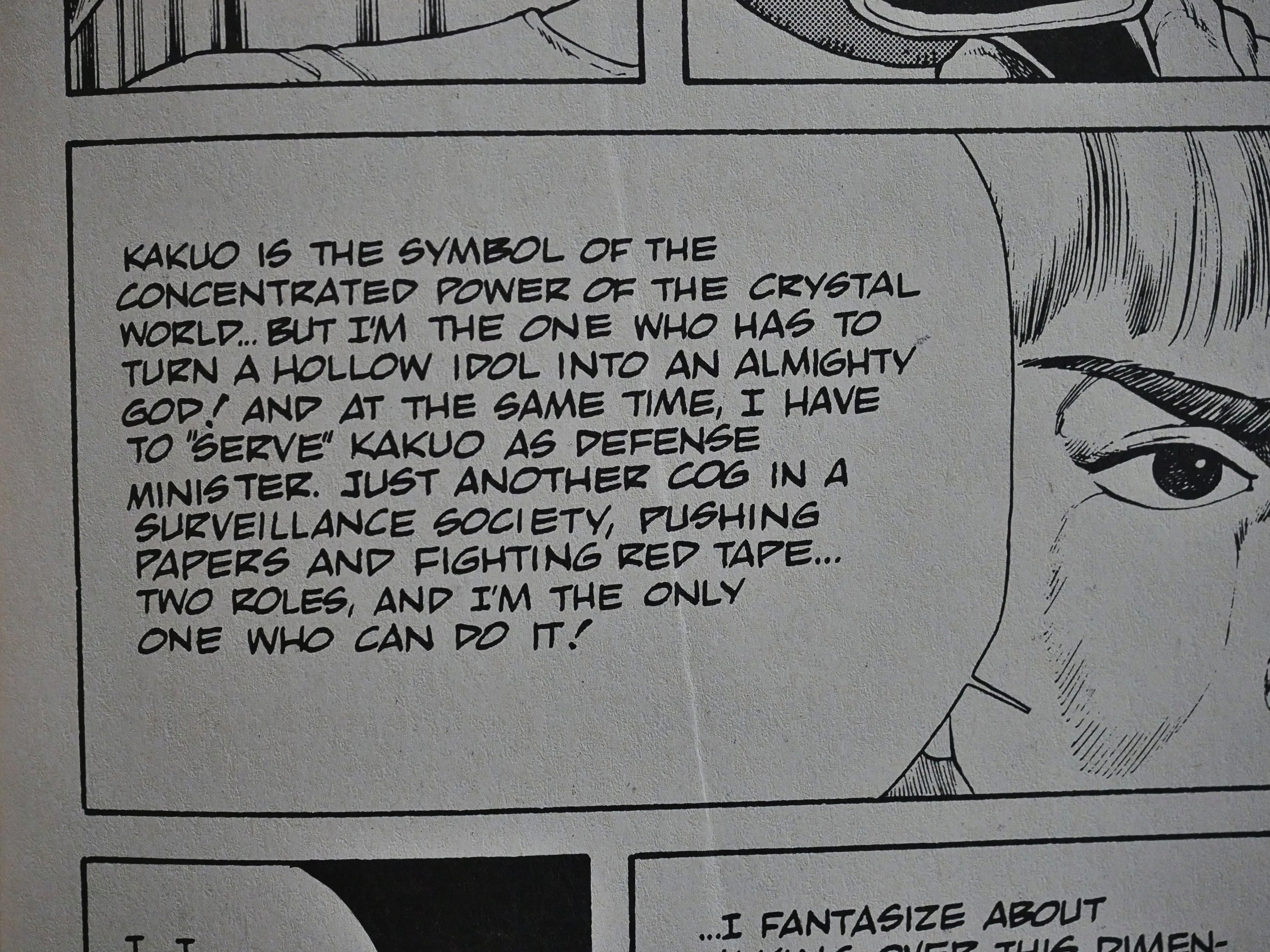
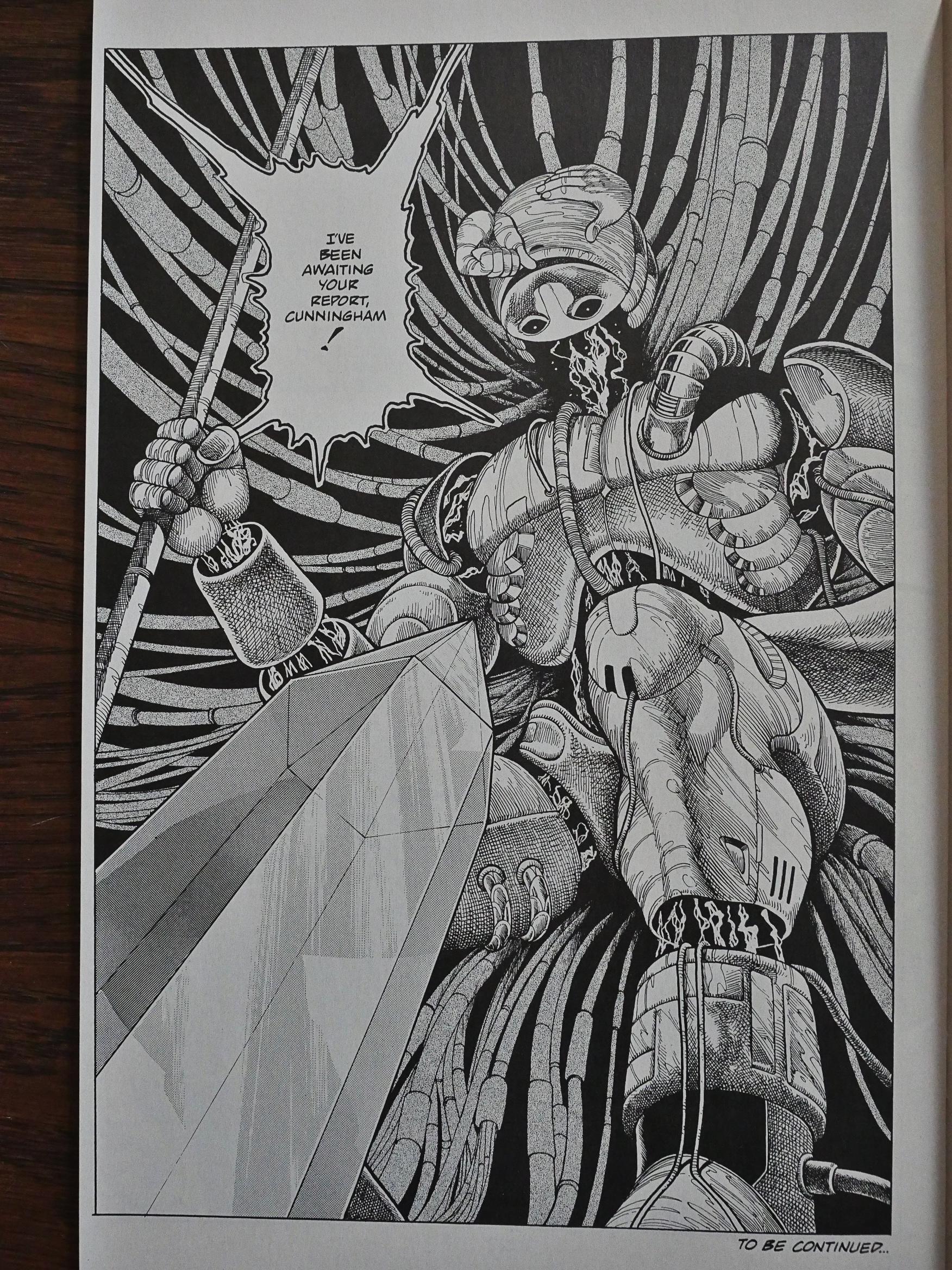
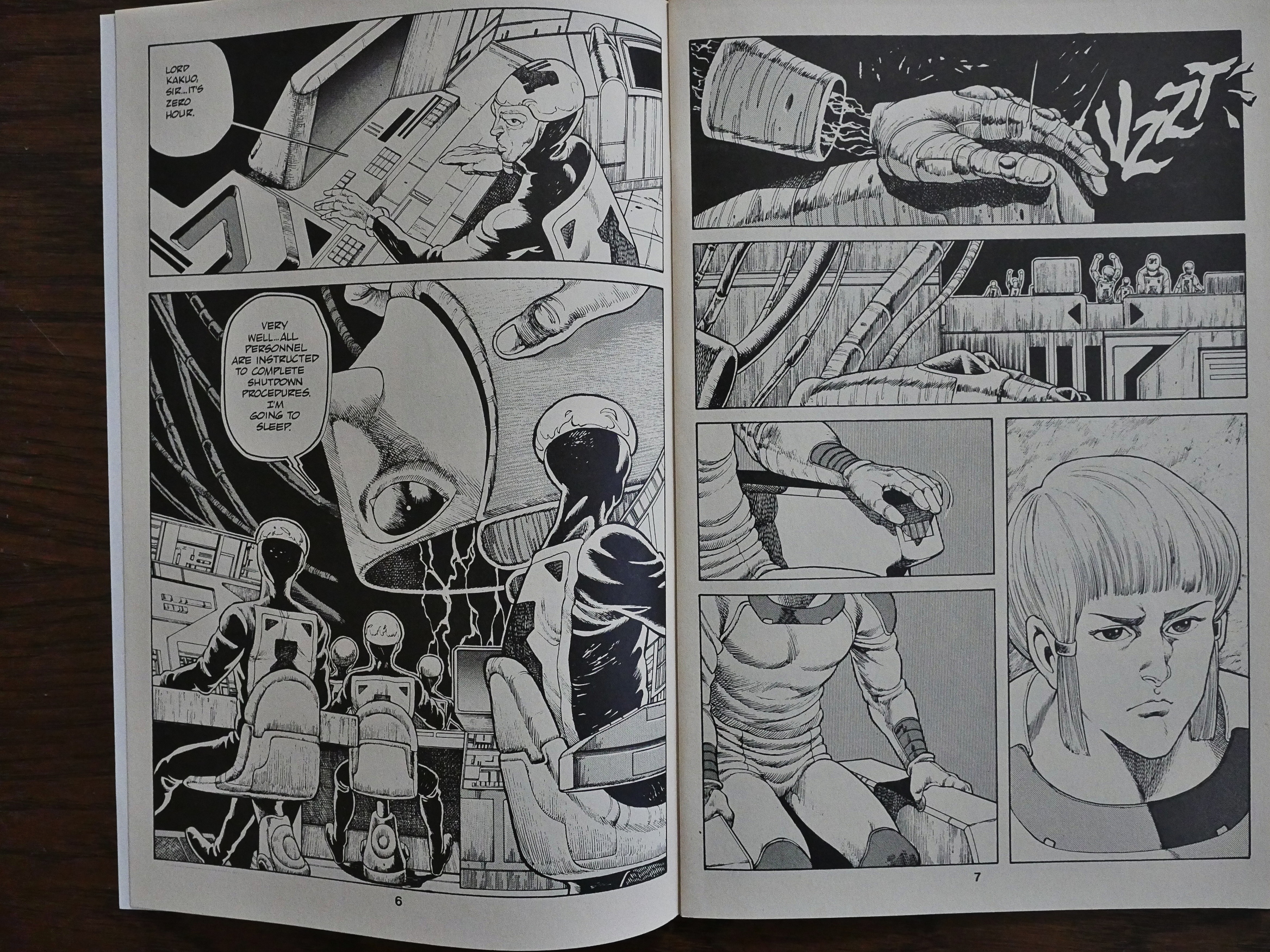
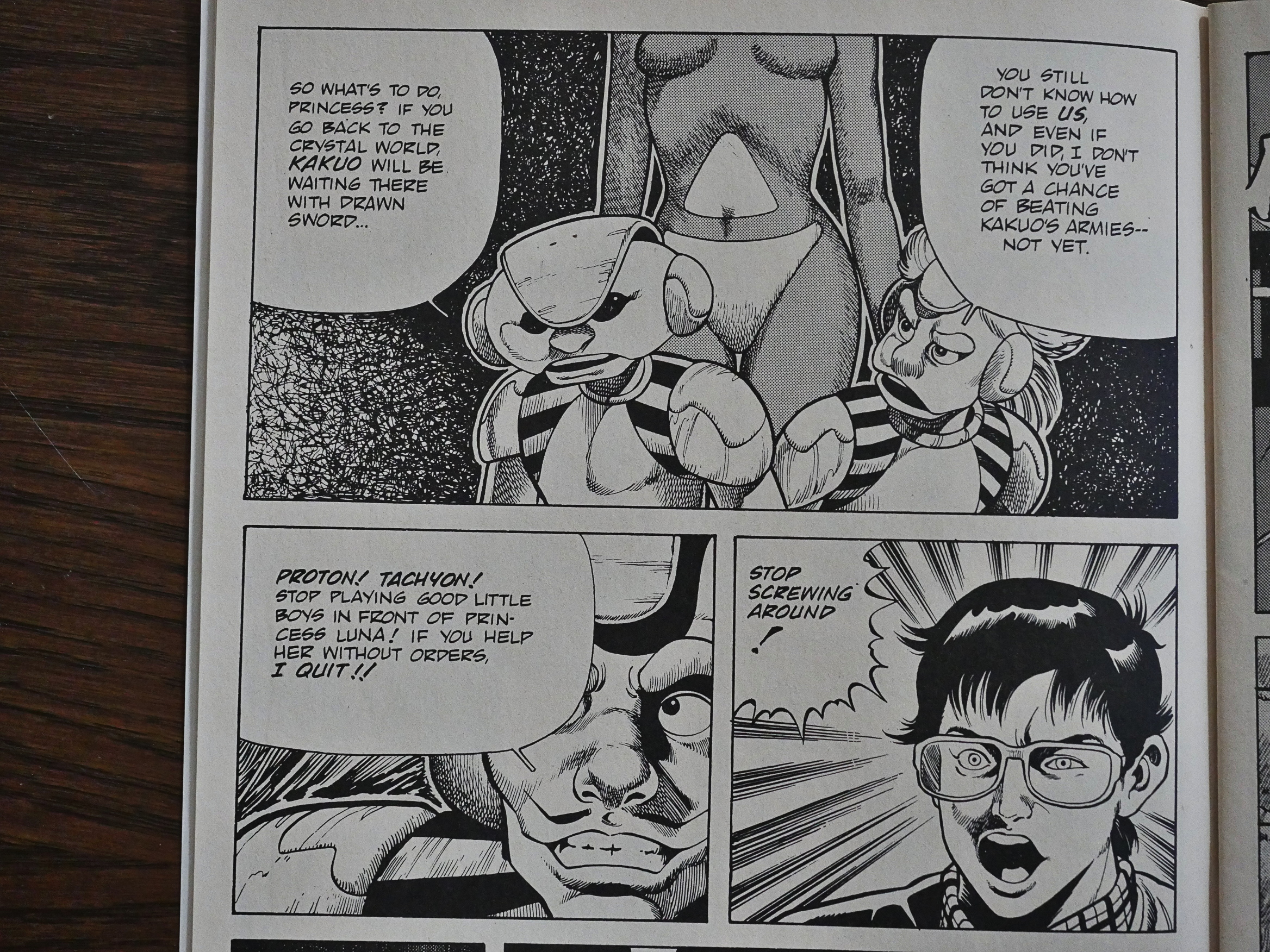
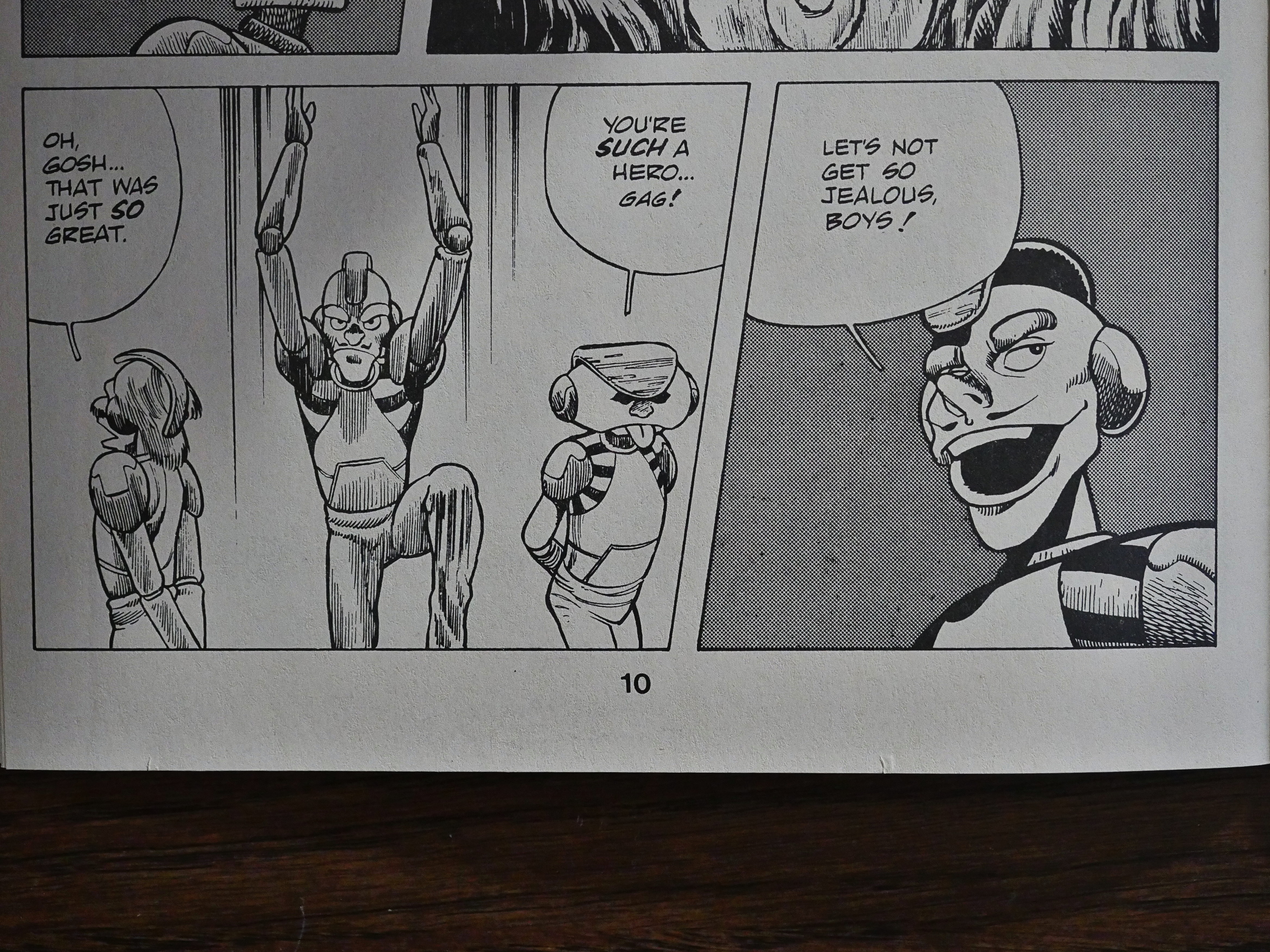
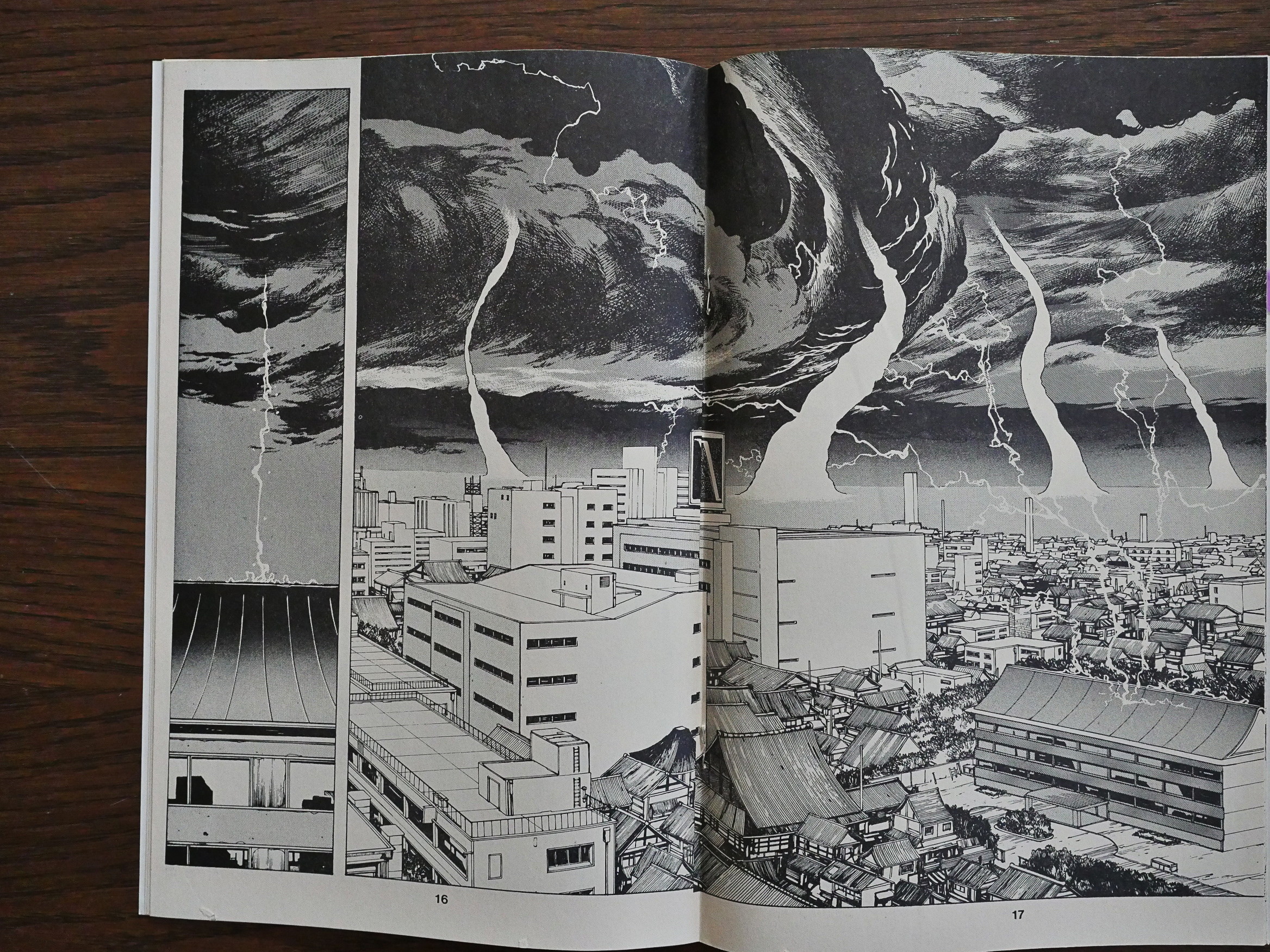
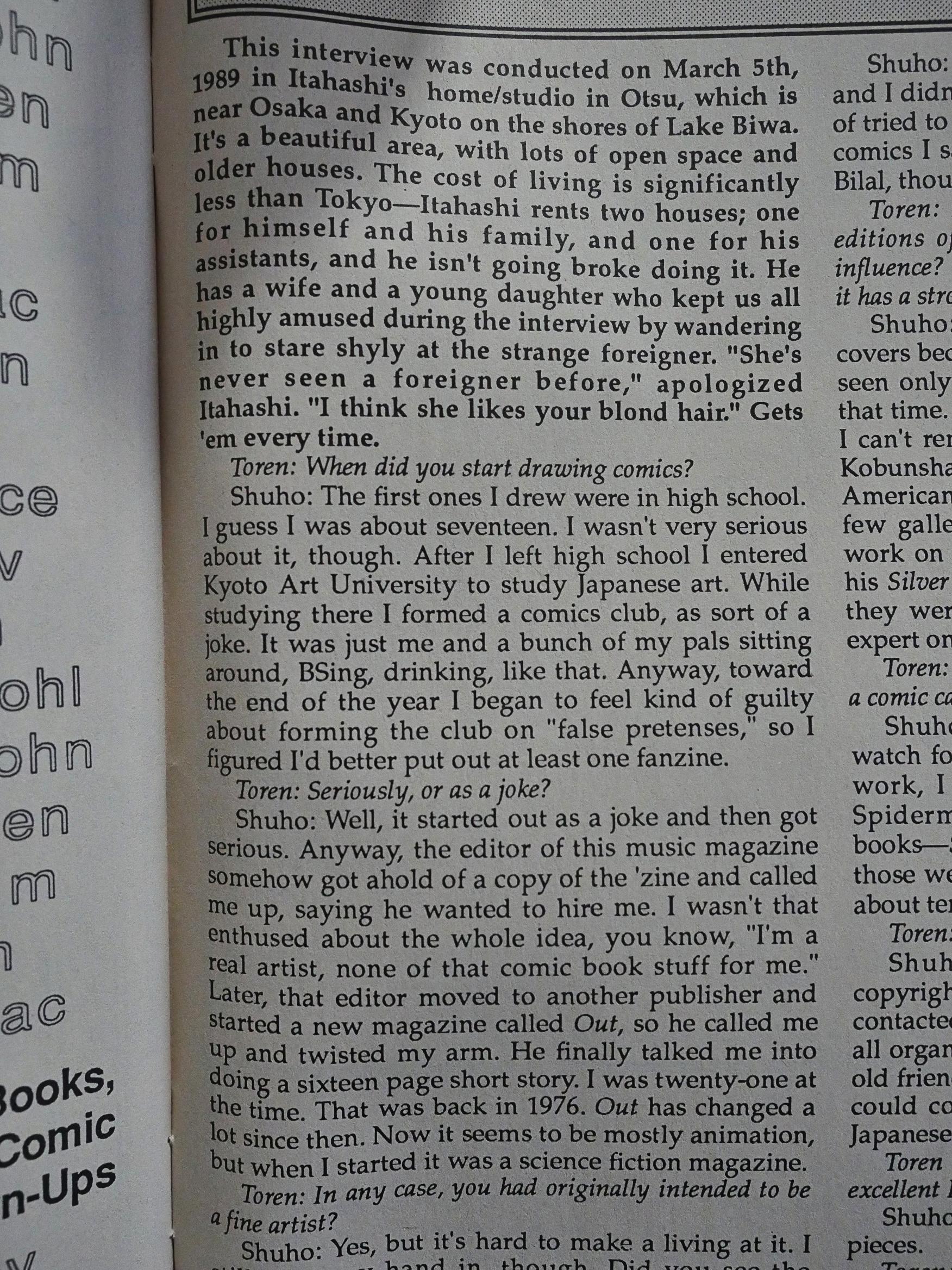
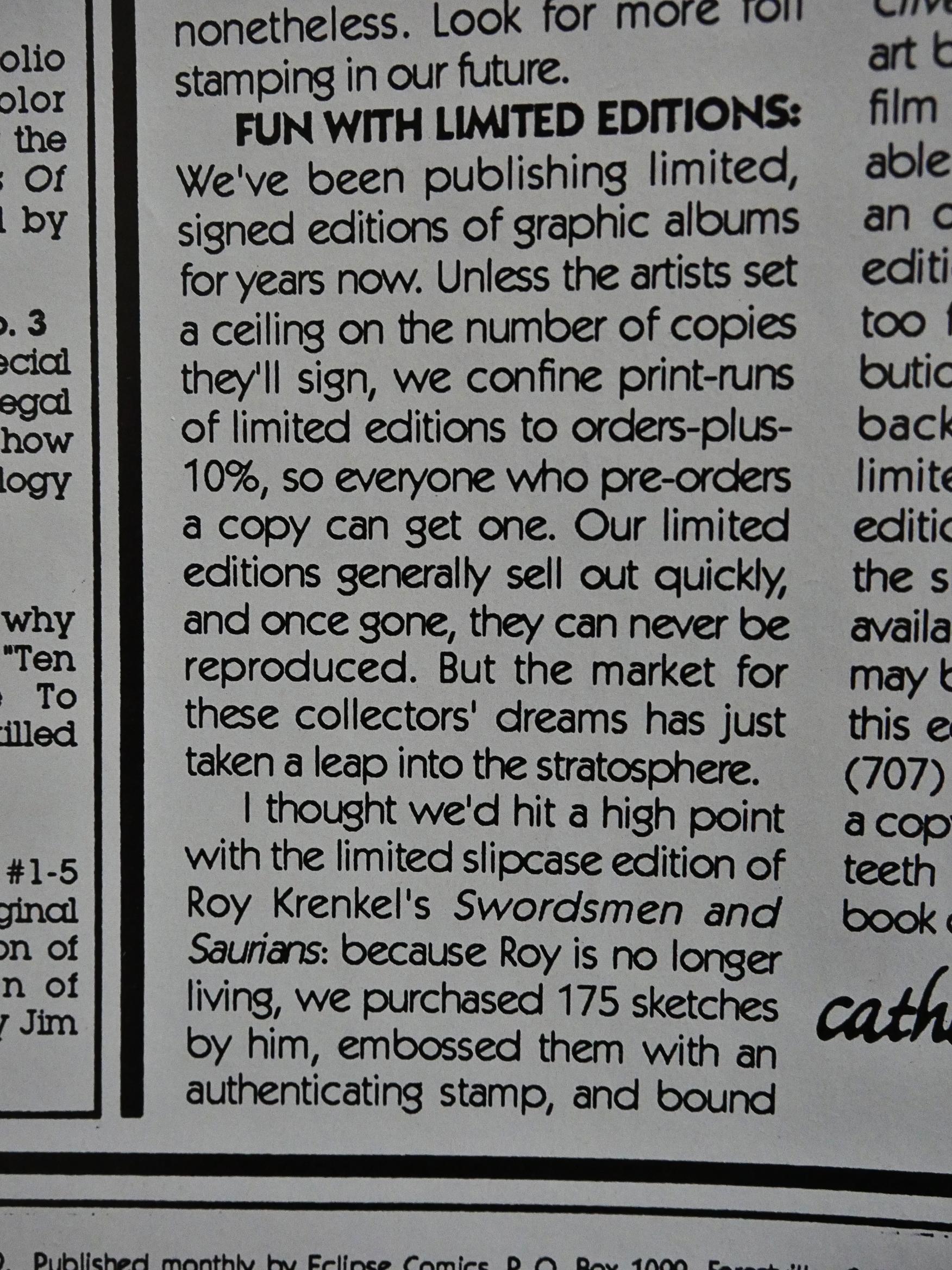
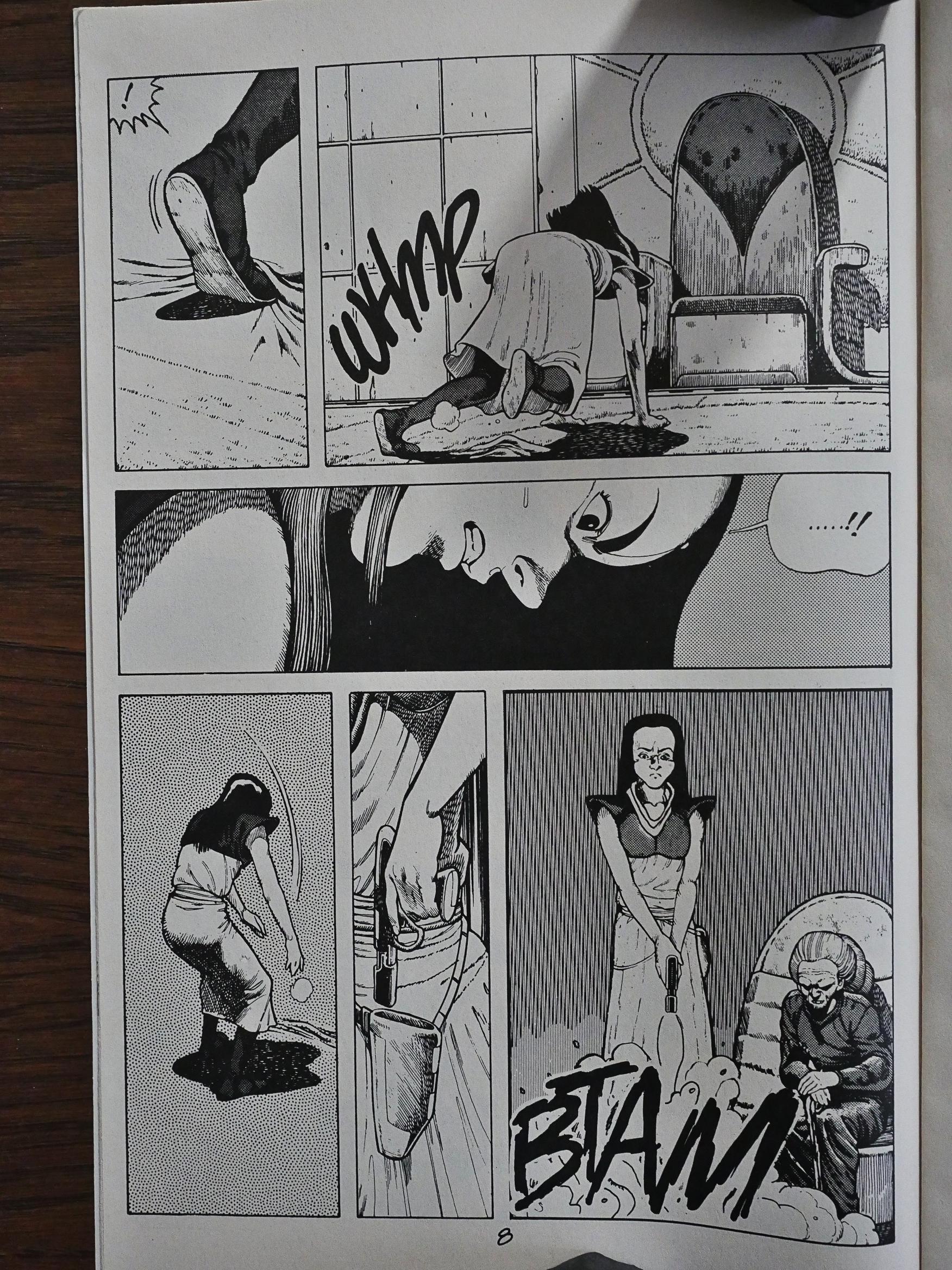
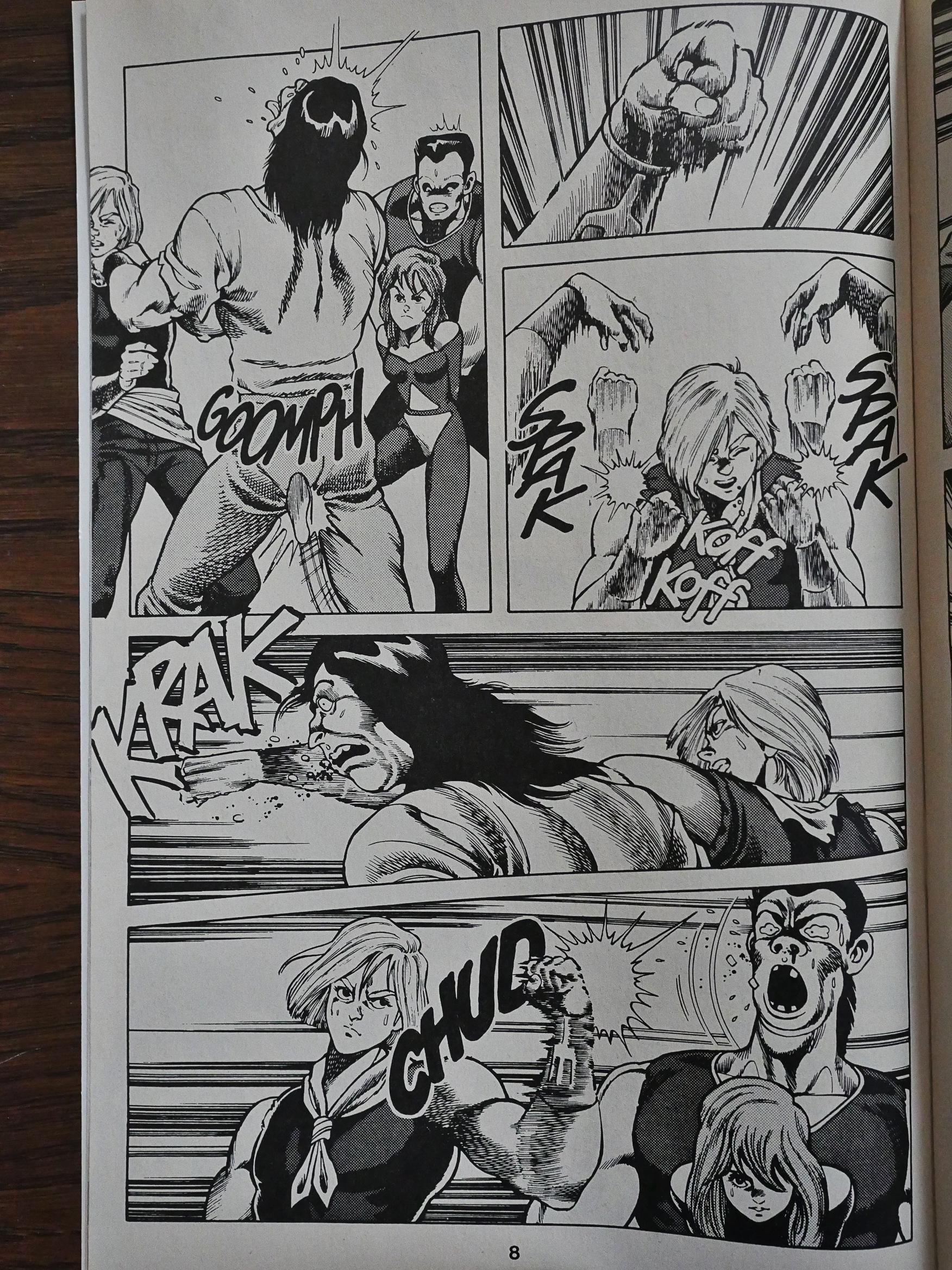
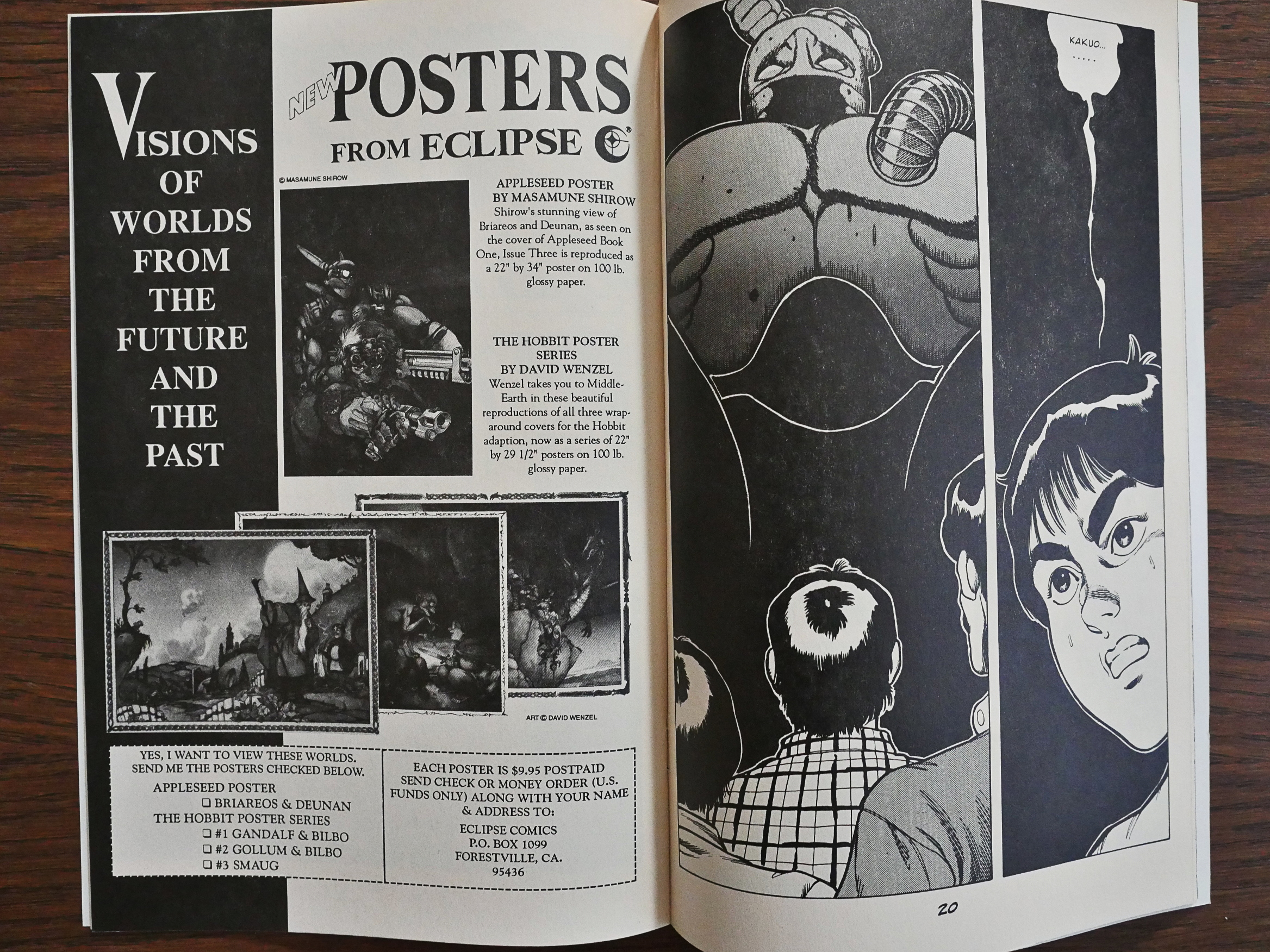
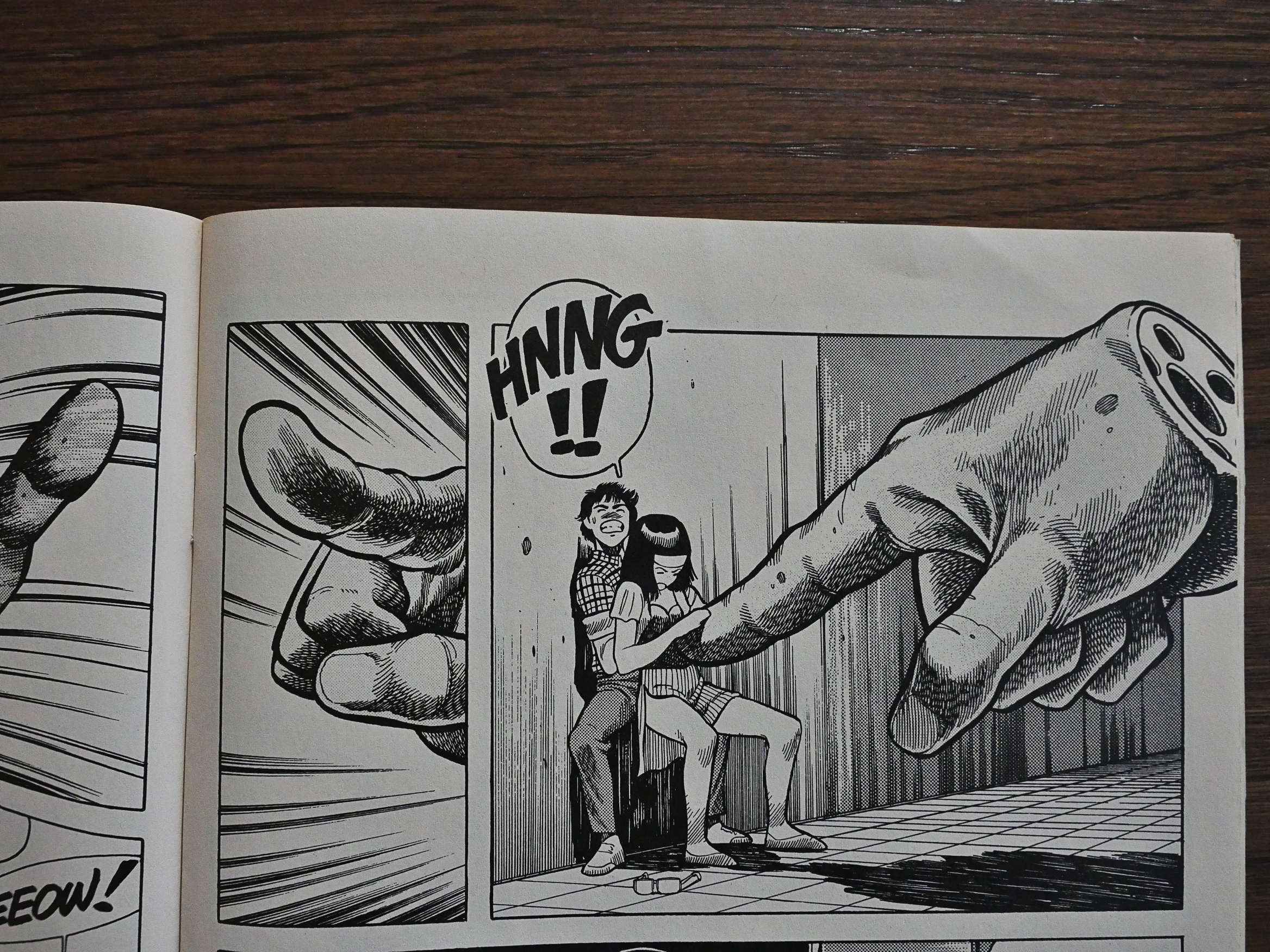
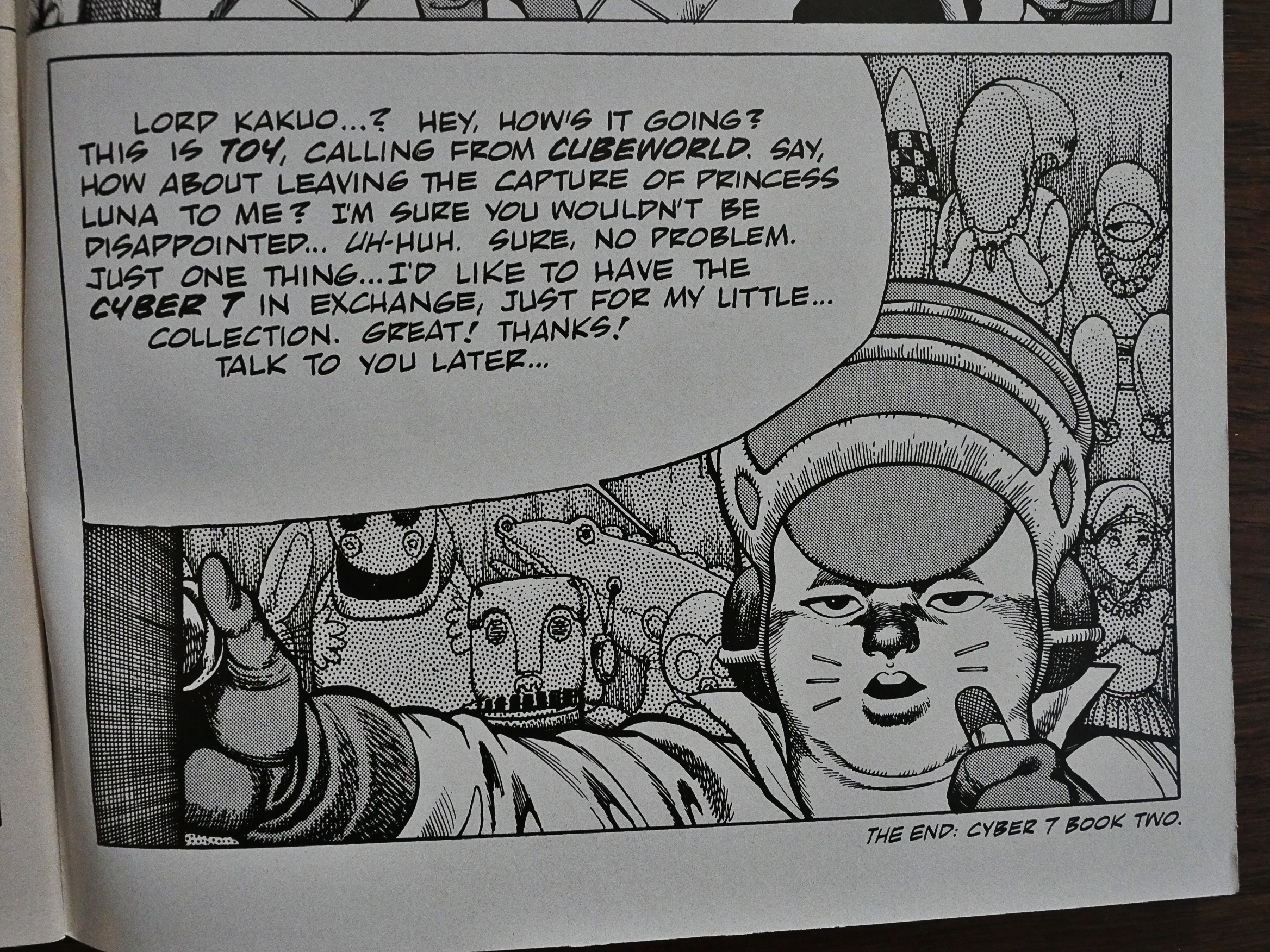
There were indeed 7 volumes published in total.